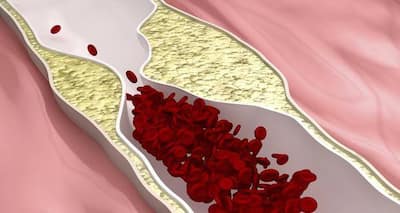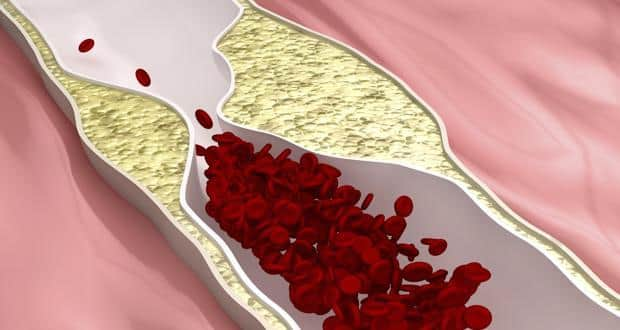Don’t Miss Out on the Latest Updates.
Subscribe to Our Newsletter Today!
Peripheral vascular disease – causes, symptoms, diagnosis, treatment and prevention

Peripheral vascular disease is a life-threatening condition and can cause limb amputation. Learn everything about the disease from our expert.
 Cardiovascular disease comprises a group of diseases that either affects the heart or the blood vessels carrying blood throughout the body. One such condition that's commonly found among Indians is peripheral vascular disease (PVD). The term 'peripheral' means outer or edge while 'vascular' relates to vessels. So, the literal meaning of peripheral vascular disease would be disease of the outer blood vessels.
Cardiovascular disease comprises a group of diseases that either affects the heart or the blood vessels carrying blood throughout the body. One such condition that's commonly found among Indians is peripheral vascular disease (PVD). The term 'peripheral' means outer or edge while 'vascular' relates to vessels. So, the literal meaning of peripheral vascular disease would be disease of the outer blood vessels.
PVD is also called peripheral artery disease (PAD) which means that it affects blood vessels carrying blood away from the heart to the extremities or the lower limbs. Like all other cardiovascular diseases, PVD can also be life-threatening but can be prevented. Here are some facts about the disease you should know.
What causes peripheral vascular disease?
Also Read
Peripheral vascular disease is caused by narrowing or blockage of blood vessels supplying blood to the limbs due to deposition of fatty substances, cholesterol and other cellular waste on the walls of blood vessels to harden and form a plaque (also known as atherosclerosis). As a result, blood supply to the limbs is obstructed or reduced, making it difficult for the person to perform physical activities.
Who is at risk of developing the disease?
'The risk factors for developing peripheral vascular (arterial) disease are same as that of coronary heart disease (CHD),' says Dr Vineet Sankhla, Interventional Cardiologist and Cardiac Electrophysiologist at CIMS Hospital and are divided into the following categories:
Non-modifiable risk factors include:
- Age
- Gender (men are more likely to get PVD than women)
- Race (South East Asians are at genetically at an increased risk)
- Family history of ischemic heart disease (IHD)
Modifiable and controllable risk factors are
- Smoking
- Diabetes
- Hypertension
- Increased cholesterol levels
'Like coronary heart disease, people who follow an unhealthy lifestyle or have a sedentary lifestyle are at an increased risk of developing the disease, he says.
So are the symptoms of PVD same as that of coronary heart disease?
Yes. Some of the symptoms may overlap with heart disease if the blood vessels carrying blood to the heart are also affected. 'A decreased blood supply to the heart can cause chest, jaw and arm pain called as angina,' says Dr Vineet. Here are some other symptoms:
- Decreased blood supply leads to pain in the affected limbs called as claudication. Initially, the pain occurs only with exertion but later as the disease progresses the person may feel severe pain even while resting.
- Apart from pain in the limbs, there can be local and trophic changes in the affected limb like pallor (paleness of the skin), redness, motor paralysis (in ability to perform daily function like moving the limb), loss of hair and ulcers over the skin.
How is the disease diagnosed?
'PVD can be suspected in any person who has risk factors for atherosclerosis and presents with limb claudication and other signs mentioned above,' says Dr Vineet. Once suspected the doctor conducts the following tests:
- Ankle Brachial Index (ABI): It is a simple bedside test in which the ratio of ankle blood pressure to the blood pressure of the arm (brachial BP) is taken. A ratio less than 0.9 makes diagnosis of PVD more likely.
- Doppler studies of limbs: To confirm the disease, the doctor may recommend imaging tests like Doppler ultrasound. It basically measures the blood flow in the areas behind the ankle and the knees with the help of high frequency ultrasound waves.
- CT and MRI angiography: Angiography can be used to study blood vessels in the limbs by injecting a coloured dye (iodine) in the blood vessels and check its flow. Imaging can be done by a computed tomography (CT) scan or magnetic resonance imaging (MRI). These images are conventional angiograms that are used to confirm the diagnosis of the disease.
Is the condition life-threatening? What are the complications involved?
Dr Vineet says 'PVD, if severe enough, can be life threatening and may require urgent intervention. Severe PVD in the lower limbs can lead to acute limb ischemia (blocked blood supply). This can progress to cause gangrene because of lack of oxygen and blood and even lead to loss of the limb if not treated at the right time.'
How is it treated? Are there any advances in treatment?
PVD is a treatable condition in most of the cases, says Dr Vineet. The goal of the treatment is to relieve claudication (lowered blood flow to the limbs during exercise) and prevent severe blockage that might lead to gangrene and limb amputation. A patient can either be treated with medication o surgery, depending on the severity of the condition.
- Medication: Antiplatelet and anticoagulant medicines are give to prevent blood from clotting inside the vessels. For high cholesterol levels responsible for PVD due to atherosclerosis, statins (cholesterol lowering drugs) are prescribed. Some medicines like Pentoxifylline which reduce the viscosity of blood may also be given to improve blood flow through the vessels.
Apart from that there are some advanced treatment options. Dr Vineet explains a few of them:
- Angioplasty: Catheter based interventions like balloon and stent angioplasty is performed to widen the blocked arteries. Read more about angioplasty -- indications, procedure, risks
- Rotational and directional atherectomy: It is a surgical procedure where the blood vessels are cleaned to remove atherosclerotic plaques using high speed rotating metallic burrs. A small drill with a rotating drill at the tip is inserted into the blocked blood vessels. The plaque is scraped due to the rotational movement of the drill and the particles are removed from the blood stream by the liver and spleen
- Peripheral bypass surgery: It is performed in patients who are not amenable to undergo catheter based treatment. A peripheral bypass surgery is similar to a coronary bypass surgery, where a graft (a tube or blood vessel from your body) is used to bypass the blocked blood vessel and connect it to a nearby healthy blood vessel, completing circulation.
Can the disease be prevented? How?
Yes. If you modify diet and adopt a healthy lifestyle you can prevent the disease. So, exercise daily and improve circulation, eat healthy, quit smoking and drinking and live a stress-free life.
Read more about causes, symptoms, diagnosis and treatment of peripheral vascular disease.
You may also like to read:
- Atherosclerosis due to high cholesterol all your queries answered
- Sanjay Dutt's illness: What exactly is peripheral vascular disease?
- Natural remedies for heart disease (Gallery)
- Cholesterol control mega guide all you need to know to prevent heart disease
- 8 natural cholesterol busters
For more on cardiovascular disease, check out our heart disease section. Follow us on Facebook and Twitter for all the latest updates! For daily free health tips, sign up for our newsletter. And to join discussions on health topics of your choice, visit our forum.


